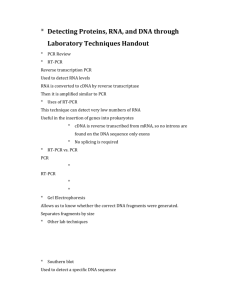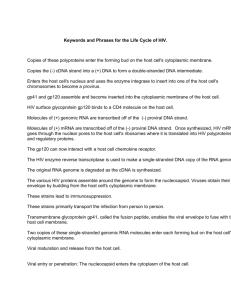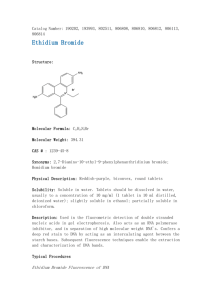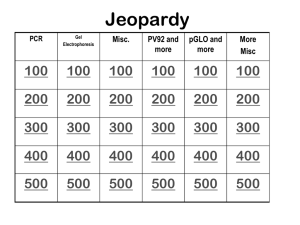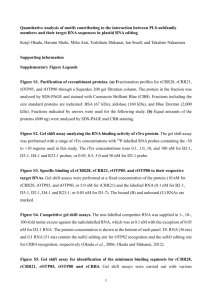RNA Extraction
advertisement
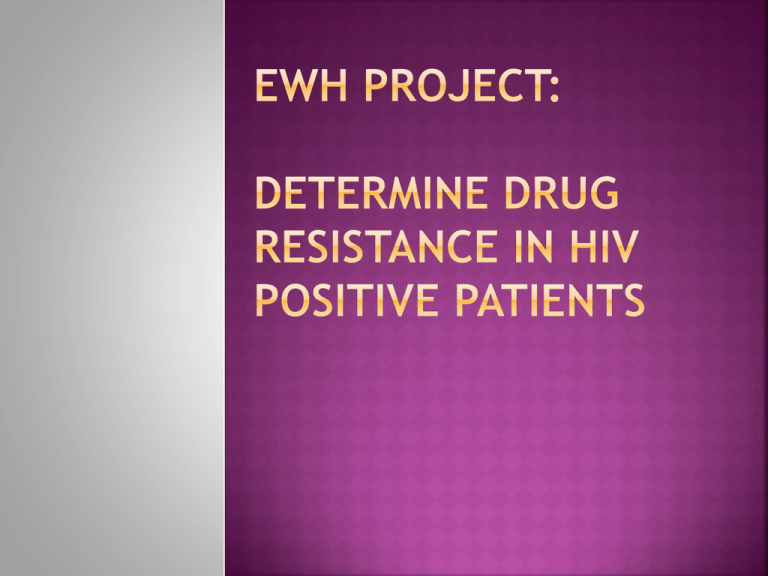
The HIV virus can mutate in HIV positive patients taking Anti-Retroviral Therapy (ART) Their HIV strain has now become drug resistant (DR), and their current medication no longer works This increases the patient’s viral load, and creates the possibility of passing on a drug resistant strain of HIV To create a device which can qualitatively detect if an HIV positive patient’s ART is working or if their strain has mutated Create an automated platform which combines RNA extraction, a PCR Thermocycler, and Gel Electrophoresis to give a qualitative result. Use RNA extraction methods to purify RNA Send a single strand of RNA to PCR group PCR group turns single strand of RNA to cDNA (complementary DNA) via RNA transcriptase. Then use PCR to amplify DNA segment PCR group sends amplified DNA to electrophoresis group Electrophoresis group runs samples through gel, sample can then be analyzed. If a band is present on a specific segment of the gel, then HIV is present. Can conclude the patient’s HIV strain is drug resistant, due to the presence of HIV Steps Lyse serum Adjust binding conditions Bind to glass mesh Remove contaminants of RNA extraction: Inhibitor Removal Buffer Wash Buffer Elute Roche : High Pure Viral RNA Kit Obtain sample from RNA team Convert RNA to cDNA Amplify DNA via PCR Heat and cool sample according to protocol Export to Gel Electrophoresis team Make Agarose Gel with Ethidium Bromide Load amplified DNA from PCR/Thermocycler into gel Run voltage (100V) through gel for approximately 20-40 minutes View gel under UV light to determine presence of HIV Visible due to ethidium bromide tag Building our own box based on open source designs Looking for inexpensive, safer alternatives to ethidium bromide Create safe waste disposal protocols if ethidium bromide must be used. Designing This means Resource Limited Settings Size for Developing Nations. should be reasonable If it is too large it will be too expensive to ship Cost Must be incredibly reliable Overly complex designs are more likely to break Would like to be able to run between 20-100 patient samples in a day Blood pooling methods

